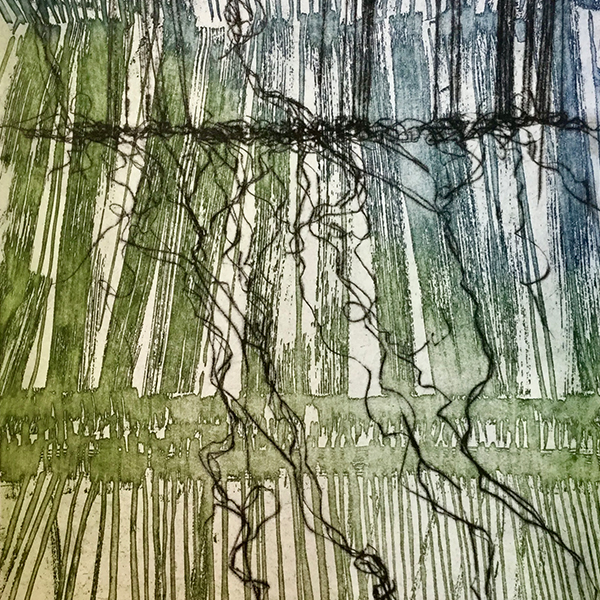June Russell is a painter and printmaker, born in Liverpool and based in Bradford. June has exhibited regionally and nationally since 1996, the year she first took a studio at West Yorkshire Print Workshop. Between 2004 and 2009, June took a break from Printmaking to work as Director of Fabric in Bradford and Projects Manager at the Art House in Wakefield.
She now works from her own printmaking studio at South Square Centre in Thornton, Bradford where she has begun to develop her practice again.
“My work is rooted in observation and drawing and my subject is the landscape, architecture, heritage and development of the city I’ve made my home. I enjoy using a wide range of traditional and experimental printmaking methods to develop my drawings into print, producing very small editions in which each pull is subtly different. In recent years, I have concentrated on drypoint and collagraph media, as well as renewing an acquaintance with direct drawing. As an active member of Inkers Printmaking Group, I have been involved in a number of residencies and exhibitions responding to industrial museum collections and, as a result, Yorkshire’s rich print and textile heritage has become a focus of my work.
During an 18 month residency for Bradford Museums & Galleries, I spent a great deal of time drawing in the weaving & spinning shed. I wasn’t sure what to concentrate on at first; there is so much complex machinery. My drawings are usually quite precise and realistic, but that didn’t seem to work here, because I was overwhelmed by the amount of detail.
One day, one of the volunteers was weaving a piece of cloth on the working loom, filling the shed with sound. Somehow the noise of it seemed to get into my head. I relaxed and started a looser kind of drawing, which was more about the sounds and motion of the machines. This experience was the source for the work here.
I’ve continued to use the Museum as a resource, and am now a volunteer there myself. The print techniques I’ve used are varied – etching, aquatint, drypoint, relief and monotype. I like to use the same matrix to produce different, unique images, or to layer prints on top of each other. This, too, seems appropriate to the textile source.”


